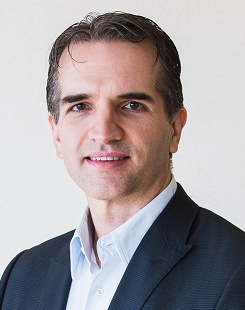Google will soon release a new wireless device that operates indefinitely without a battery, tapping new solar cells that can power small devices using energy from light fixtures and other ambient light sources – even when it’s relatively dark indoors.
The partnership with Ambient Photonics (AP), which was announced at the Consumer Electronics Show (CES) 2024, will see the companies create an unspecified “new consumer product” that taps AP’s dye-sensitised solar cell (DSSC) technology to produce power even in low-light indoor situations.
Inspired by the photosynthesis mechanisms that allow plants to generate energy using chlorophyl, DSSC cells are made with a layer of titanium dioxide particles that is covered with a sunlight-absorbing dye, which captures light energy and circulates it between anodes and cathodes like a battery.
The theory behind the technology has been known for decades, but previous cells were only strong enough to power extremely low-power devices such as calculators and dancing flowers.
Refining the process has enabled Ambient Photonics to triple the output of DSSC cells that now produce enough power for new applications – with the technology that Google will use, low-light indoor (LLI) Bifacial Solar Cells, released in September.
Light can come not only from direct sources such as overhead lighting and desk lamps, but may be diffused through windows or reflected off of walls – providing a range of potential power sources that, research has shown, are almost as efficient as a source of power as direct conventional power.
A design based on optically clear glass allows the two-sided bifacial cells to capture energy from both sides of the cell at the same time – meaning that devices will be able to capture energy no matter how they are oriented, or whether they are turned upside down.
The “high-performance solar cell technology… is a game-changer for all kinds of devices,” co-founder and CEO Bates Marshall said, touting the technology’s potential to reduce reliance on conventional batteries that currently clog up landfills – with 242,000 tonnes of portable batteries sold in the EU during 2021 alone and just under half that much recycled.
The new cells provide enough energy to replace AAA, AA and smaller button batteries, with a range of connected products including remote controls, wireless keyboards, and electronic shelf labels that were all demonstrated at CES.
Solar power without the sun
With billions of computer peripherals requiring regular battery charging or replacement – Australians alone will buy 1.9 million keyboards out of a world market of 275.6 million units sold in 2028, according to Statista – the promise of limitless energy supplies for self-powering devices has piqued the interest of peripheral manufacturers such as Primax Electronics, which has also signed on to integrate the Ambient Photonics cells into its Primax Ambient Solar Mouse.
Strong demand from device makers has already led Ambient Photonics to begin building a new manufacturing facility, which will open in 2025 and uses a fabrication process that allows the solar cells to be “printed” in any size and shape – ensuring that consumer device makers can integrate it into any kind of product.
As well as the still-unnamed Google product, the technology is set to be built into a range of peripherals, Internet of Things (IoT) devices, security equipment, building sensors, and more that, Marshall said, “not only power themselves more effectively in ambient light, but can also be designed and mounted in a variety of flexible ways and perform regardless of shape or orientation.”
Many remote wireless sensors, building monitors and other IoT devices have already been designed to run on very low power so they can be deployed in remote situations, such as on large paddocks or in underground areas – and integrating DSSC technology into such devices would allow them to operate continuously without relying on maintenance technicians to visit them regularly to replace their batteries.
Use of the technology in electronic shelf labels allows the tiny devices, which display product and price information using low-power e-Ink technology, to operate and be wirelessly updated without requiring a separate power source for thousands of units per store.
The technology sits on a spectrum of renewable power solutions that are seeking to find new ways to harness solar and other light energy – including large-scale techniques such as solar thermal energy, and experimental technologies capable of capturing ambient mid-infrared radiation to generate solar power at nighttime.
A recent partnership with lithium battery maker Nichicon Corporation is exploring the use of the cells to fast-charge built-in device batteries – hinting at a future where even your smartphone and smart watch will continuously charge themselves.










